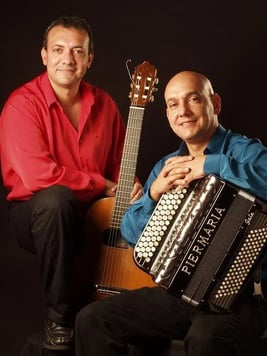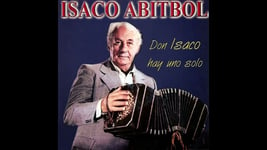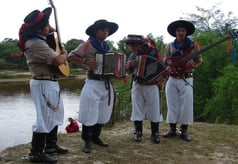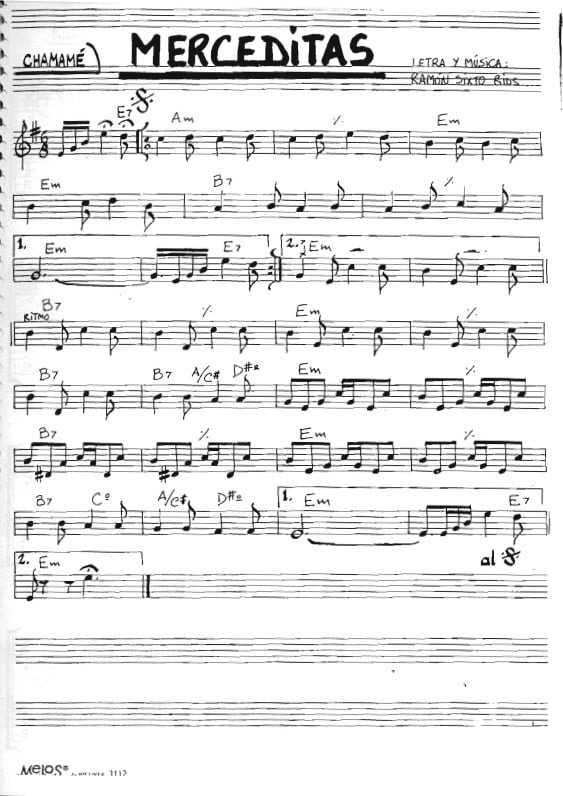Chamamé
States: Paraná, Santa Catarina, Rio Grande do Sul
Overview: Known for European immigration (German, Italian, Polish), the South has a strong gaucho identity, cooler climate, and distinctive folk culture. Music here blends European forms with local stories and regional pride.
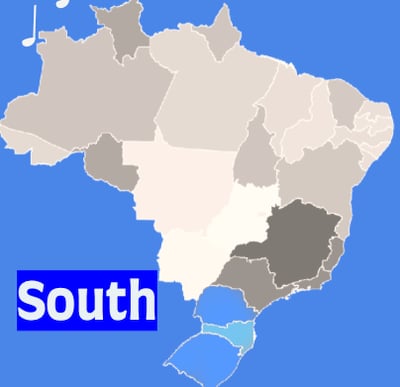

Origin: Corrientes (Argentina) → Southern Brazil
Cultural Roots: Spanish, Guarani, Central European (waltz, polka, mazurka)
Popular Music Styles:
Chamamé (Argentine-Guarani origin, strong in Rio Grande do Sul)
Milonga, Chamarrita, Vanerão
Música Nativista (gaucho folk)
Key Figures:
Rudi & Nini Flores – Virtuoso chamamé brothers from Corrientes, active in Brazil
Trânsito Cocomarola – Master of chamamé, widely heard in Brazil’s South
Luiz Marenco – Voice of modern música nativista
Os Serranos – Traditional gaucho group with pan-Southern influence
Chamamé is a folk music and dance style with deep roots in the Argentine province of Corrientes and strong influence in southern Brazil, particularly in Mato Grosso do Sul and Rio Grande do Sul. It emerged from a blend of Spanish-Peruvian musical forms and 19th-century Central European dances like the waltz and mazurka, later mingling with local guitar traditions. Despite some debate over its Guarani origins, Guarani is widely spoken in Corrientes and features prominently in chamamé lyrics. The music is marked by a unique polyrhythm in 3/4 and 6/8 time signatures interweaving in the melody and accompaniment, along with harmonies built on tonal resolutions and melodic phrasing that is lyrical and syncopated.
Typical chamamé ensembles include accordion, bandoneon, guitar, and double bass, with percussion being a modern addition. Vocals often appear in nasal duets sung in parallel thirds or sixths, in either Guarani, Spanish, or both. The genre expresses love, nature, and life along the Paraná River, often in contrast to tango’s urban, criminal themes. Instead, chamamé embraces themes of regional pride, the military, and folklore, exemplified in songs like “Sargento Cabral” and “La guardia de seguridad.” The music also served historically as a political symbol during civil unrest, and its association with the military helped carry it across national borders during colonial and postcolonial conflicts.
Rudi and Nini Flores, Corrientes-born brothers and classically trained musicians, are considered one of chamamé’s most refined modern exponents. Settling in Paris in the 1990s, they developed a “chamber chamamé” style, sophisticated, introspective, and technically demanding. Their music, such as “Nueva Ilusión,” straddles the line between local folk and European classical traditions, demonstrating the genre’s capacity for both raw communal energy and nuanced artistic expression. Their work reflects chamamé’s essential duality of being at once music of the people and a virtuoso tradition.
Earlier figures like Tránsito Cocomarola, Isaco Abitbol, and Ernesto Montiel shaped the foundations of the genre. Cocomarola was known for elegant and melancholic tunes like “Kilómetro 11,” Abitbol for lyrical, romantic compositions like “La Calandria,” and Montiel for a more forceful, dynamic style. Each helped define the emotional and rhythmic spectrum of chamamé. Today, chamamé remains a cornerstone of Litoral identity in both Argentina and southern Brazil. Its combination of rhythmic complexity, emotional storytelling, and cultural hybridity makes it one of South America’s most profound and adaptable folk traditions.
Cultural Elements:
Annual Chamamé Festival in Corrientes, Argentina
Lyrics reflect life along the Paraná River, military history, and folklore
Traditional singing in nasal duets with parallel harmonies
Sources:
Pérez Bugallo (2008), Dicionário Cravo Albin
Revista DRCLAS Harvard (Chamamé for Dummies)
Main Instruments:
Accordion,
Bandoneon
Guitar
Bass
Dance:
Partner dance: Intimate and sweeping, often in close hold, with subtle footwork. Strong regional symbol in Rio Grande do Sul and Mato Grosso do Sul.
Notable Figures:
Rudi & Nini Flores – Redefined the genre with chamber-like precision
Tránsito Cocomarola – Composer of the classic “Kilómetro 11”
Isaco Abitbol – Known for melancholic lyricism

